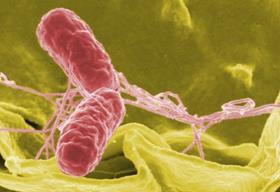
Acute foodborne illnesses cost the US an estimated US$152bn per year in healthcare, workplace and other economic losses, according to a report published by the Produce Safety Project (PSP).
The study, titled Health-Related Costs from Foodborne Illness in the United States, was written by Dr Robert L Scharff, a former Food and Drug Administration (FDA) economist and current Ohio State University assistant professor in the department of consumer sciences.
The report estimates that more than a quarter of these costs, an estimated US$39bn, are attributable to foodborne illnesses associated with fresh, canned and processed produce.
The FDA has announced that it will propose before the end of the year mandatory and enforceable safety standards for the growing, harvesting and packing of fresh produce.
These will be the first nationwide safety standards for fresh fruits and vegetables.
“An up-to-date cost analysis of foodborne illnesses is critical for FDA officials and lawmakers to craft the most effective and efficient reforms,” said Jim O’Hara, PSP director, in the release.
A decade ago, we spent more than US$1.3bn annually to try to reduce the burden of foodborne illness and today we are spending even more. We need to make certain we are spending limited funds wisely and hitting our target of reducing sicknesses and deaths, and this study gives us a yardstick to measure our progress.”
According to the study, produce (fresh, canned and processed) accounts for roughly 19,700,000 of the reported illnesses documented, at a cost of approximately US$1,960 per case and US$39bn annually in economic losses.
California, Texas, New York, Florida, Illinois and Pennsylvania were the states most impacted by foodborne illness cases related to produce.
In additional to national data, the report includes data at the state level.
“The contribution of this study is that it provides more complete estimates of the health-related cost of foodborne illness in the US by summing both medical costs (hospital services, physician services, and drugs) and quality-of-life losses (deaths, pain, suffering, and functional disability) for each of the major pathogens associated with foodborne illness,” said Dr Scharff.
“This cost includes both expenses to the person made ill such as pain and suffering losses and costs to others in society such as outlays by insurance companies that pay medical expenses.”
Dr Scharff based his analysis on the economic principles currently used by FDA and US Department of Agriculture (USDA) economists in their cost analyses. In addition, to account for uncertainty he utilized confidence intervals and sensitivity analysis.
The cost of foodborne illness is calculated on both an aggregate level and a pathogen-specific level.



